Tom’s Hardware Verdict
APNX V1 is a high-quality case with good thermals, smart engineering, and a reasonable price.
Strong thermal performance
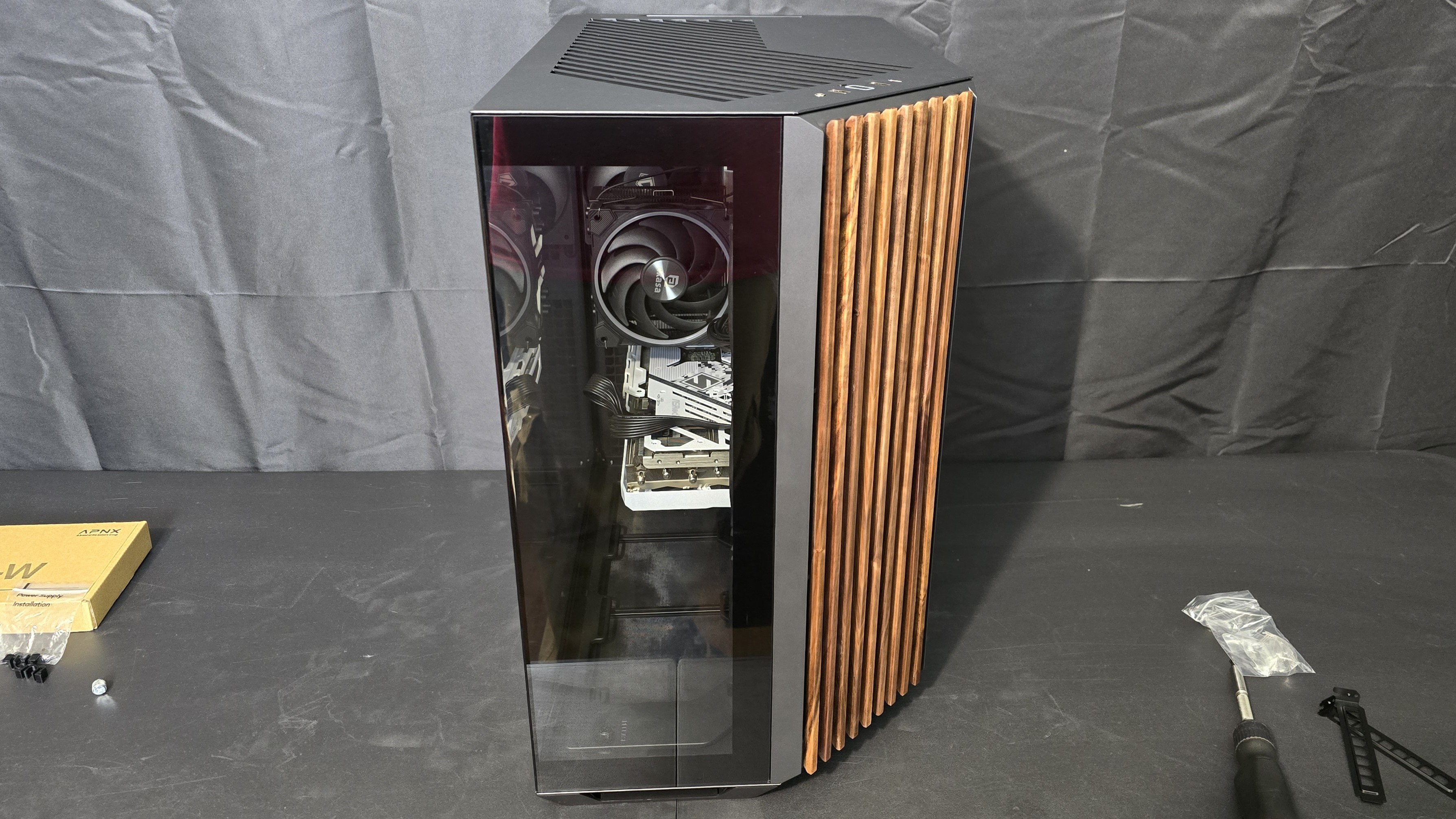
Cheaper than competitors
Wood panel option available
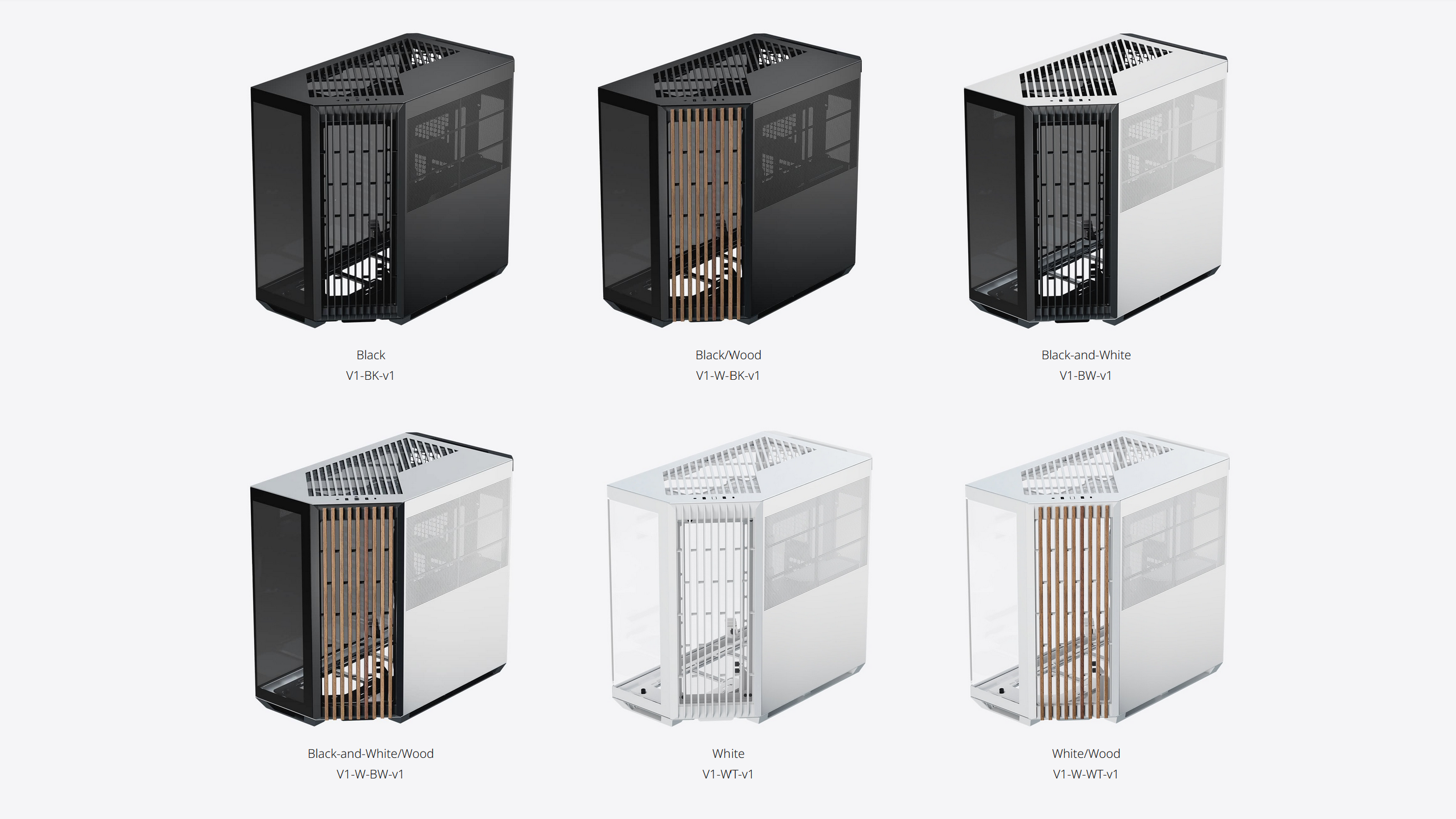
Better engineering than most fishbowl-style cases
Cons
Taking apart the case takes a few extra steps
Why you can trust Tom’s HardwareOur expert reviewers spend hours testing and comparing products and services so you can choose the best for you.Find out more about how we test.

Features and Specifications
The latest PC case on our test bench is APNX V1, a big fishbowl-style case that sets itself apart from the competition with an angled intake design. As you’ll see in ourbenchmarksbelow, this gives it an advantage over competing cases. The cherry on top is the price: At only $119, it’s cheaper than many bigger-name competitors.
Will the APNX V1 make our list ofbest PC cases?Let’s take a look at the specifications of the case, straight from APNX, then we’ll go over the features of this case and wrap up our review with thermal benchmarks.
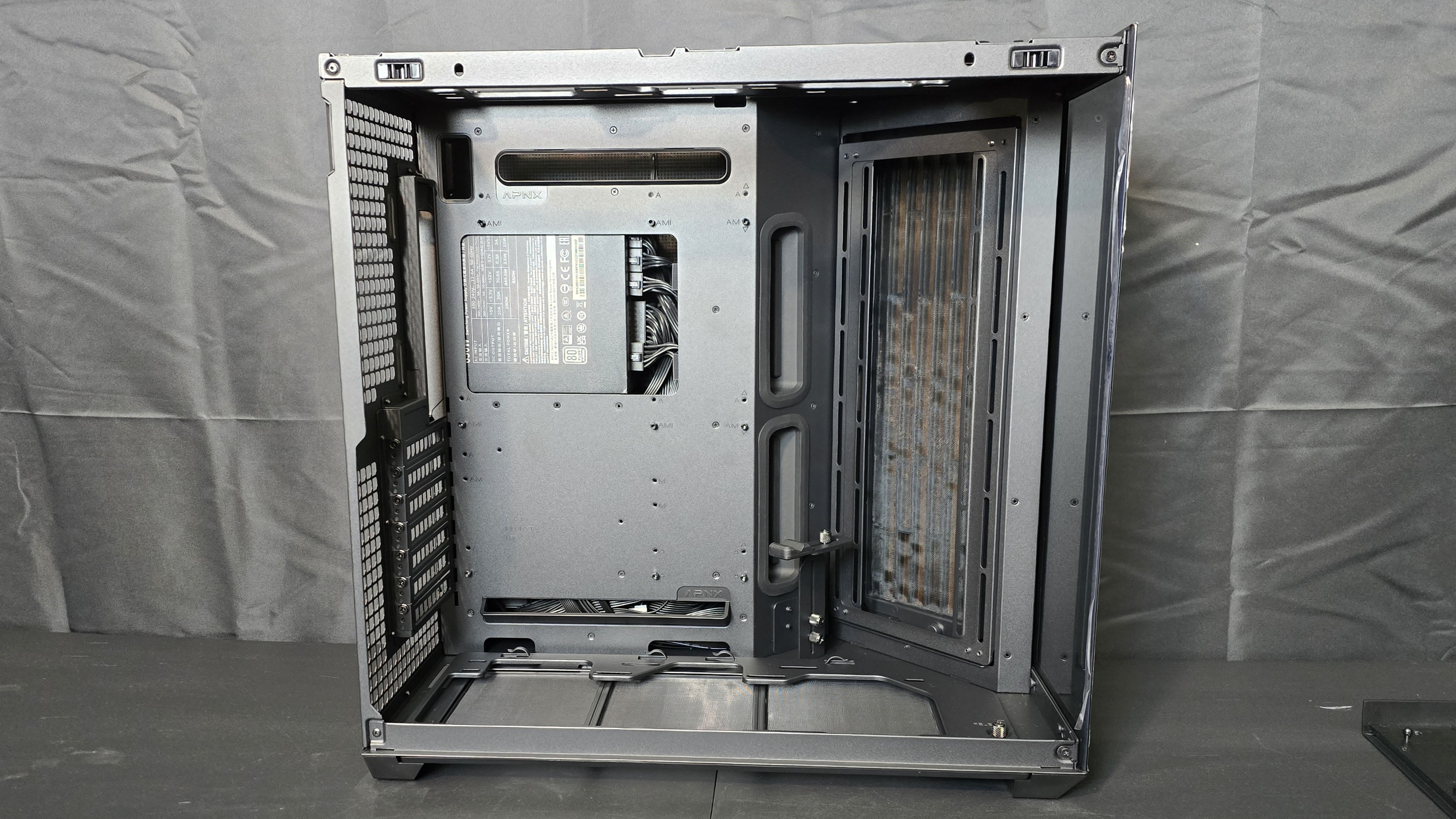
Features of APNX V1 Computer Case
Six style options
Since the release ofFractal Design’s North tower, wood panels have enjoyed a resurgence among PC enthusiasts. APNX’s V1 typically comes in black or white options, but if you’re willing to spend $20 more, a wood panel option is available as well.Also note that, while the black model we were sent for review looks gray in many of our photos due to the brightness of our photography lights, under normal lighting it’s as typical black cases you might see from any other case brand.
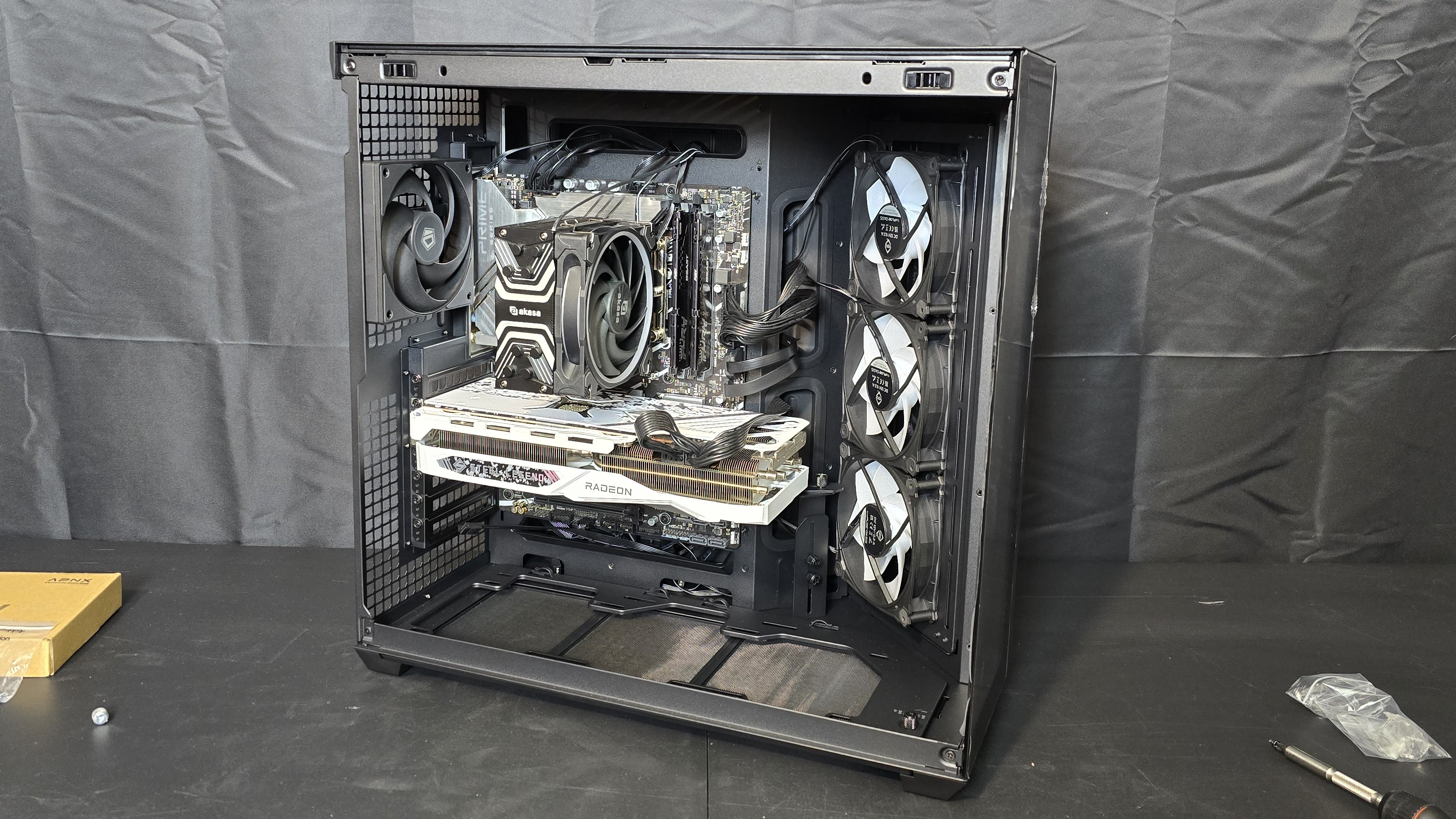
There are a total of six styles available: Black, White, Mixed, and those same options with wood panels.
Included GPU holder
APNX incorporates a built-in GPU holder to combat video card sag.
Side view, better airflow design, adjustable motherboard height
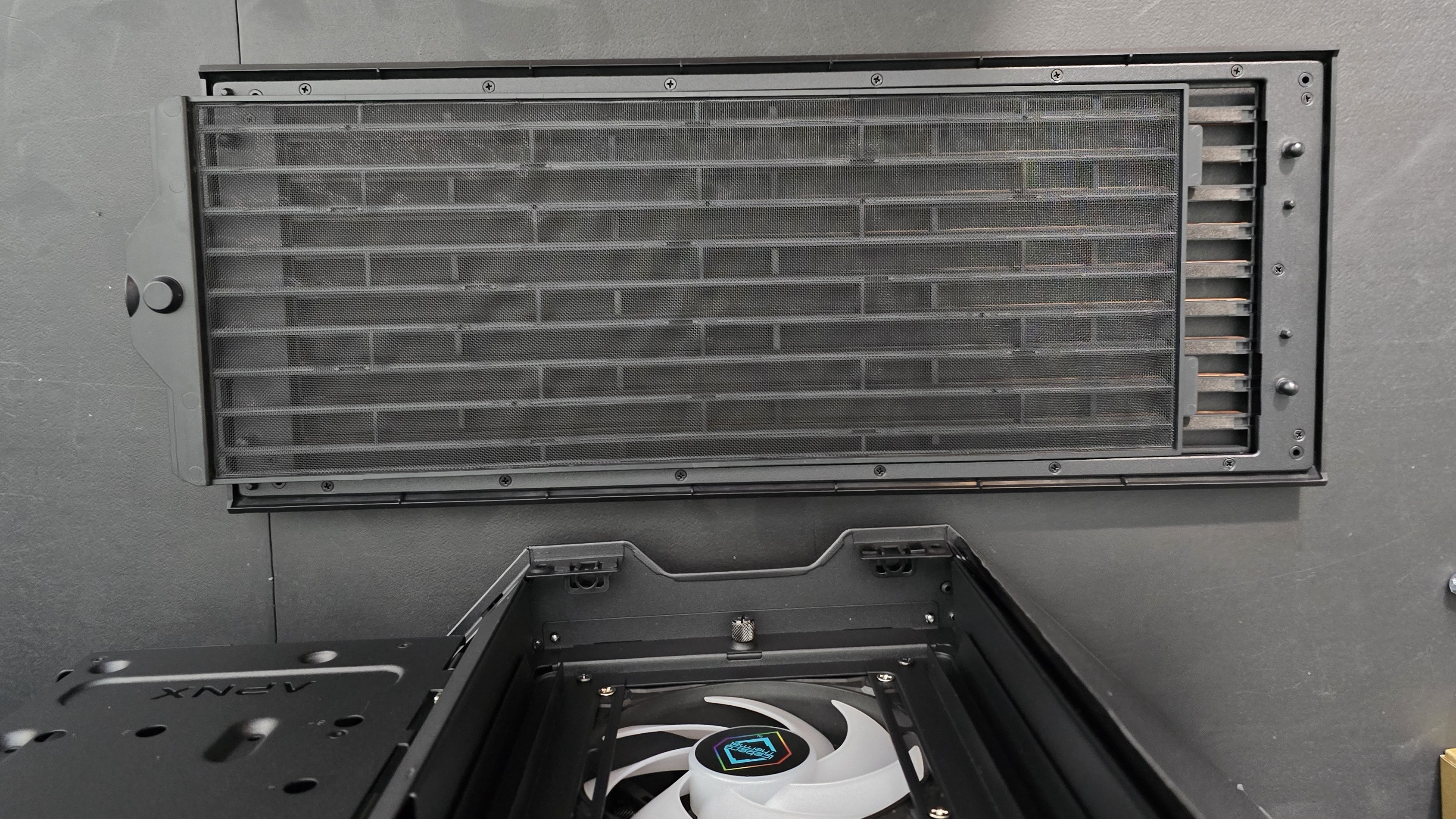
The first thing that sticks out to me is how APNX’s fishbowl design is different from most competitors. The airflow of most fishbowl-style cases have intake fans that push air from one side of the case, directly into the glass panel on the opposite side. I don’t like this type of design, because the strength of airflow gets reduced when it smacks into the side panel.APNX avoids this issue by implementing its intake fans on a 45-degree angle, which allows the V1 to have better thermal performance than the competition – as you’ll see in the benchmarks down below.
If you look closely in the photo above, you’ll see that there are two rows of slots for motherboard installation. That’s because the case supports motherboard installation both lowered and raised, according to your needs. Next to the area for the intake fans, you have cable management paths and the built-in GPU holder.
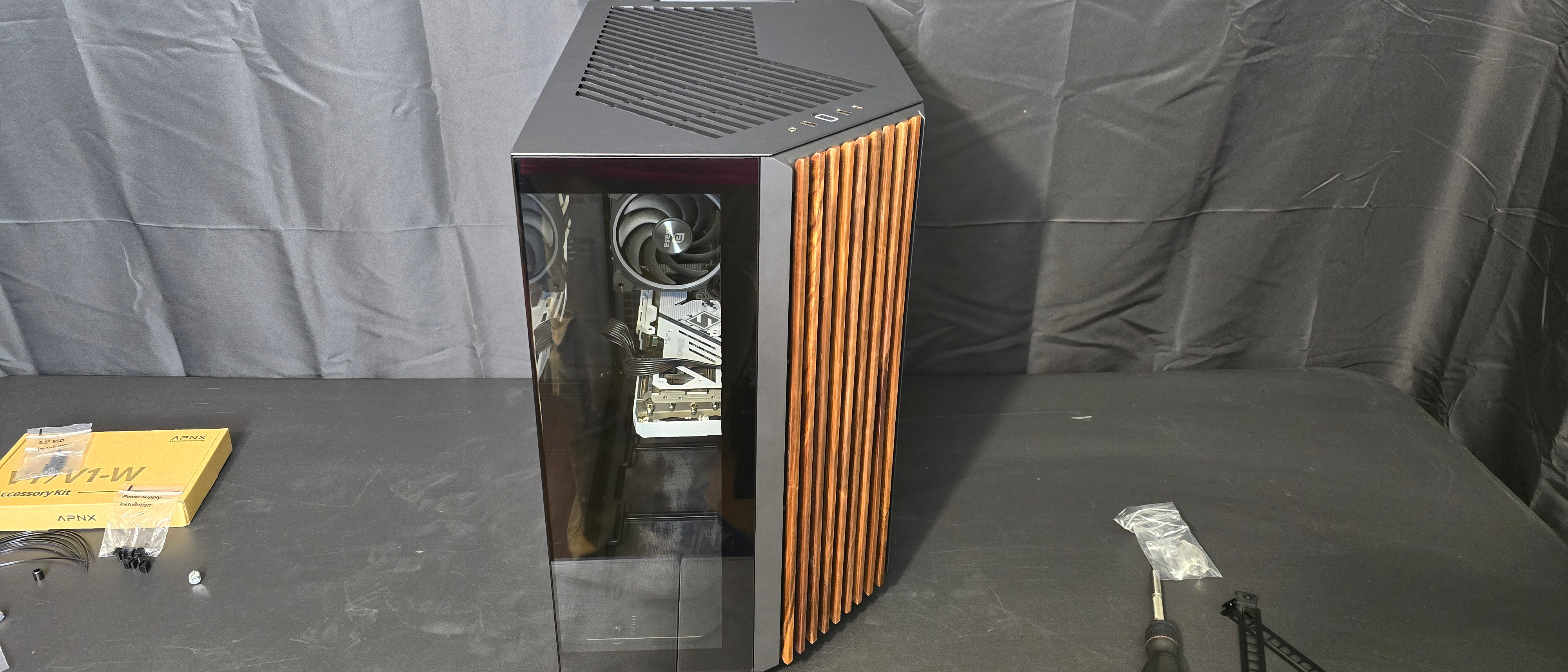
Radiator and fan support
This case can be equipped with up to 10 fans. There’s support for one exhaust fan and up to nine fans from the top, side, or bottom of the unit. You’re also able to install up to three 360mm radiators from the top, side, and bottom.
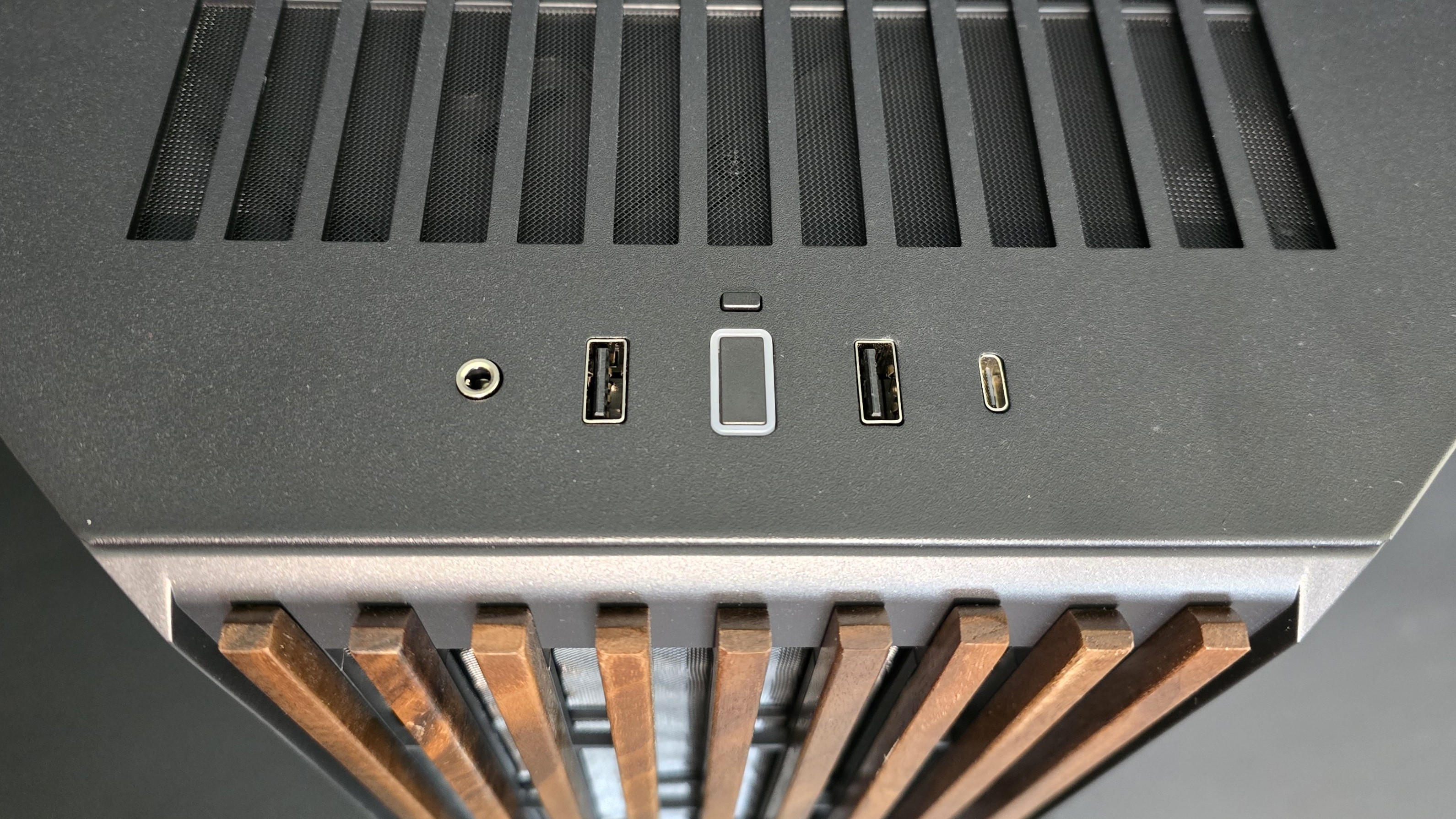
Dust filters
There are dust filters built into the top, side, and top of the unit as well. The dust filter at the bottom is very easily removable, but to reach the other two filters, you’ll need to remove the front wood panel or the top panel – nothing too difficult.
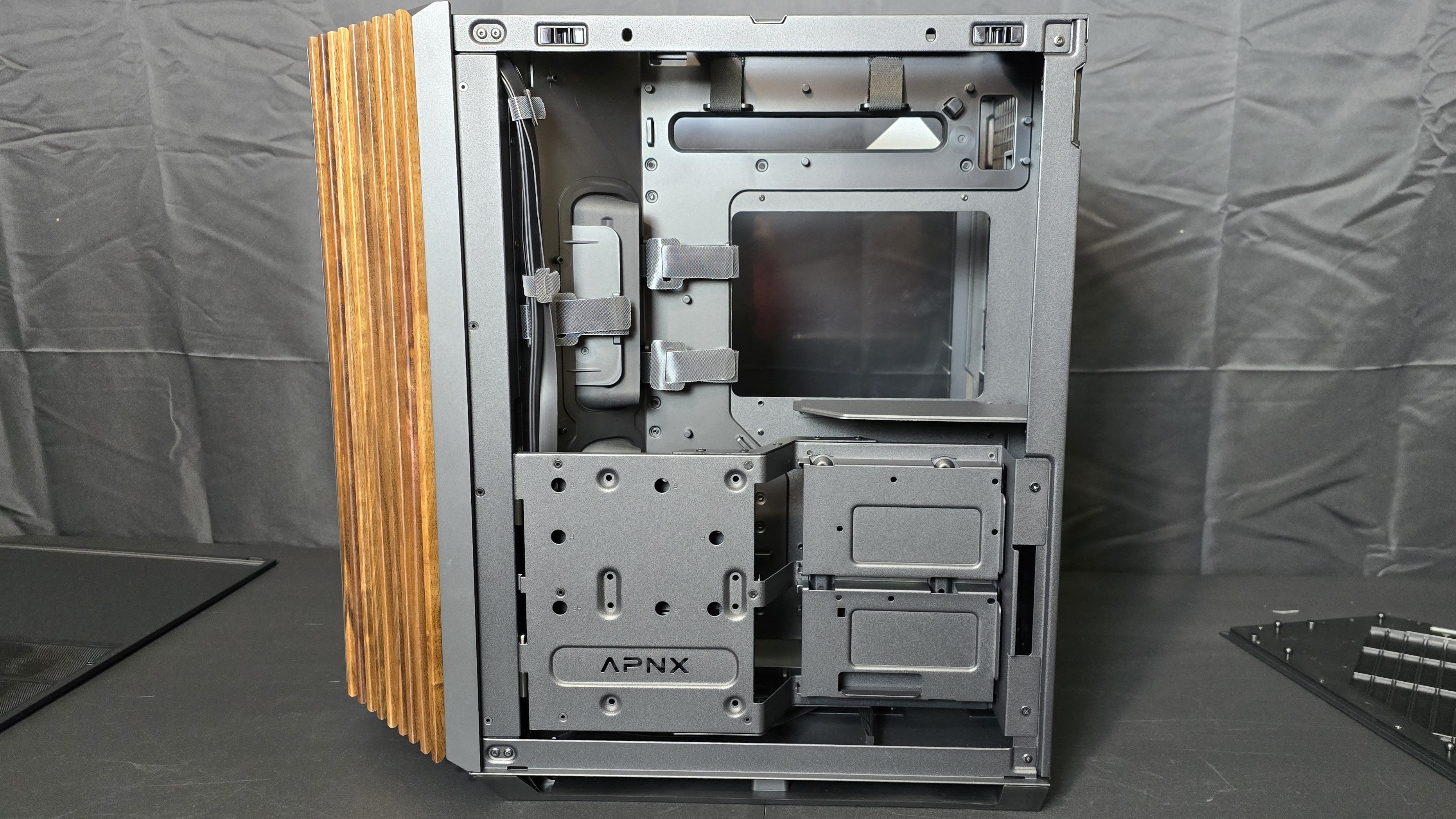
Front view
Like other fishbowl designs, most of the front of the case is see-through glass – the most striking difference is the angled intake and the wood front panel.
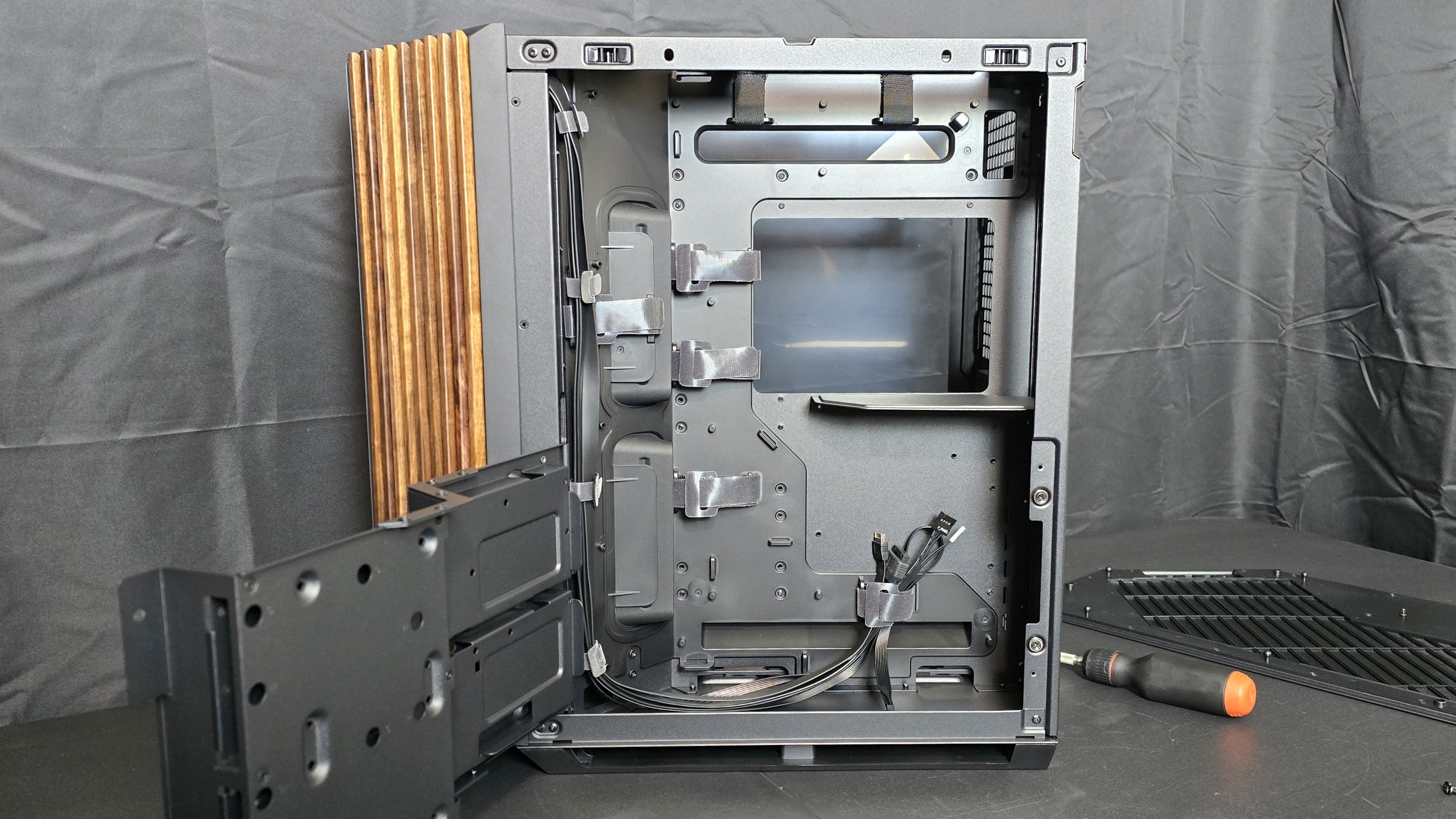
IO Panel
The IO Panel is located above the angled front panel and includes one USB-C, two USB-A, anaudiojack, and power and reset buttons.
Rear side view, hardware ARGB and PWM fan hub, storage, and cable management features
The APNX V1 has cable routing paths and velcro straps to facilitate cable management. Also included to assist with cable management are a small number of cable ties.
Cables can also be hidden behind the bottom storage drive plate, which supports up to six 2.5-inch drives, two 3.5-inch drives, or 1x 3.5-inch drive and four 2.5-inch drives.
Rear view
There’s not much to say about the case’s backside. The one thing that is a little different from the competition is the inclusion of a “smart bar,” the part that is directly above the power supply and IO panel slot. If you choose to install a motherboard with a raised setup, it can be moved to the bottom to cover the gap that would otherwise be visible.
One tiny complaint
The only thing that I didn’t like about this case is that the side panels are screwed in, requiring extra steps to take it apart – but this is a minor complaint in the grand scheme of things. APNX states that these screws are only included to ensure the safety of the product during shipping, and that the official company stance is that the screws are unnecessary after the product has been delivered.
Thermal Tests, Test Setup, and testing methodology
These thermal tests are presented to give you more information about the product’s performance, but aren’t intended as the sole judgment of the chassis. The style, price, features, and noise levels of a case should also be considered – and we all have different preferences. What I might like in a case, you might not – and that’s OK. My goal with these reviews is to give everyone, no matter their preferences, enough information to decide whether or not a product is right for them.
Today’s case lacks pre-installed fans, so I’ve set up the cases shown in the benchmarks below with the same set of standardized fans. The ways I’ve tested the cases are as follows:
MORE:Best Mini-ITX Cases
Current page:Features and Specifications
Albert Thomas is a contributor for Tom’s Hardware, primarily covering CPU cooling reviews.